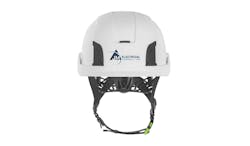The Rise of Type II Hard Hats in the Construction Industry
In the ever-evolving landscape of construction safety, personal protective equipment (PPE) continues to undergo innovations aimed at enhancing worker safety and comfort. One of the most significant advancements in recent years is the introduction of Type II hard hats. These helmets, designed to provide enhanced protection, are quickly becoming a standard in the industry.
Understanding Type II hard hats
Type II hard hats are part of the American National Standards Institute (ANSI) Z89.1 classification system, which categorizes head protection into different types based on their design and protective capabilities. Type II hard hats are designed to offer protection not only from impacts to the top of the head (as Type I hard hats do) but also from lateral impacts. This additional protection is particularly important in construction environments where the risk of objects falling or being struck from the sides is prevalent.
Key Features of Type II Hard Hats
- Enhanced side protection: The most notable feature of Type II hard hats is their reinforced design that protects against side impacts, making them ideal for environments with overhead and lateral hazards.
- Improved suspension systems: Many Type II hard hats come with advanced suspension systems that offer better fit and comfort. These systems help distribute the weight of the helmet evenly, reducing fatigue during long work hours.
- Customization options: Type II hard hats are available in various colors, styles, and configurations, allowing for customization that meets both safety standards and personal preferences.
- Electrical ratings: Many Type II hard hats are also designed to provide electrical insulation, making them suitable for electricians and others who work around electrical hazards.
Benefits of using Type II hard hats
- Increased safety: The primary advantage of Type II hard hats is their improved safety features. With lateral protection, workers are less likely to suffer injuries from side impacts, which can occur frequently on construction sites.
- Comfort and usability: With better fit, workers are more likely to wear their hard hats consistently. A comfortable helmet can lead to fewer safety violations and increased compliance with safety regulations.
- Compliance: As OSHA has outfitted their field staff with Type II hard hats, large general contractors are beginning to do the same. Outfitting your crews with these hard hats will help identify your company as a leader in safety.
- Cost-effectiveness: While Type II hard hats may come at a higher initial cost compared to Type I options, the long-term benefits of reduced injury rates and enhanced worker satisfaction can lead to lower overall costs for employers.
Industry adoption and future trends
The construction industry has seen a gradual shift towards the adoption of Type II hard hats, driven by increased awareness of safety standards and the importance of worker protection. As regulations evolve and companies prioritize safety, the expectation is that Type II hard hats will become more commonplace across job sites.
Conclusion
The introduction of Type II hard hats marks a significant advancement in construction safety. With their enhanced protective features, comfort, and versatility, these helmets are poised to play a crucial role in safeguarding the workforce. As the industry continues to prioritize safety and worker well-being, Type II hard hats represent a vital step towards a safer, more compliant construction environment. Investing in the right head protection not only ensures compliance with safety standards but also demonstrates a commitment to the health and safety of workers on the front lines.
About the Author

Kevin Kolhonen
Kevin Kolhonen is an experienced safety professional with a demonstrated history of working in the insurance/safety fields with specialization in the energy, construction, and transportation sectors. Currently, he is the health and safety manager at JM Electrical, a specialized electrical contractor in Greater Boston. As safety manager, Kolhonen is responsible for wide-ranging assignments, including the implementation, management, and maintenance of the company’s safety policies, procedures, compliance plans, and improvement initiatives. He also monitors industry regulations, visits construction sites to ensure the safety of the JME team, and establishes communications with field supervisors and field staff among other stakeholders. A graduate of Salem State University, Kolhonen brings significant experience in employee health and safety, loss prevention, and risk management to his role at JME. You can reach Kevin Kolhonen at [email protected] and learn more about JM Electrical at www.jmelectrical.com.
